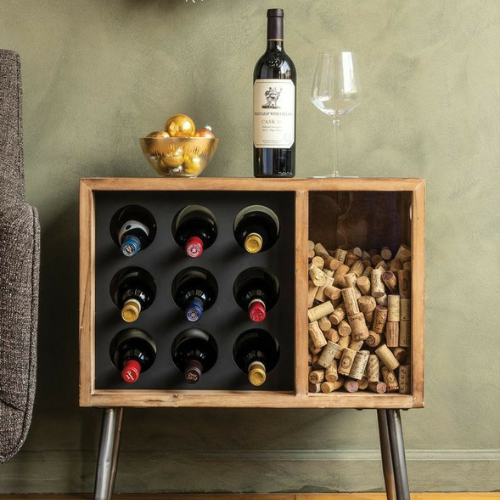In today’s world, where environmental consciousness is at the forefront of our minds and the urgent need for sustainability is evident, integrating sustainable practices into our daily lives has become more than just a choice—it has become a necessity. As homeowners, we hold a unique power to make a positive impact on the environment through our choices in design, construction, and materials. However, there still persists a common misconception that eco-friendly design is a luxury reserved only for the affluent, leaving many budget-conscious individuals feeling discouraged.
But here’s the truth: sustainable design is not exclusively reserved for those with deep pockets. In fact, it is entirely possible for homeowners on a budget to embrace sustainable design trends and contribute to a greener future. It simply requires a little creativity, research, and careful planning. Here are some ways for you to adapt to more sustainable ways for your home
Repurposing and Upcycling: Breathing New Life into Old Items

One of the key principles of sustainable design is minimising waste and utilising resources efficiently. This can be achieved by repurposing and upcycling existing materials. Instead of discarding old furniture or accessories, consider refurbishing them. A fresh coat of eco-friendly paint or reupholstering with sustainable fabrics can breathe new life into tired pieces. Additionally, explore local thrift stores, yard sales, and online marketplaces for unique second-hand items that can be incorporated into your home’s design. By giving pre-loved items a new lease on life, you not only reduce waste but also add character and individuality to your living space.
Affordable and Sustainable Materials: Making Responsible Choices

When it comes to choosing materials for your home, opt for sustainable options that are cost-effective. Bamboo, for example, is a fast-growing renewable resource that can be used for flooring, furniture, and even kitchenware. Its durability and natural beauty make it an excellent alternative to traditional hardwoods. Another affordable and eco-friendly choice is cork, which is harvested from the bark of cork oak trees without harming them. Cork flooring is not only comfortable underfoot but also provides excellent thermal insulation, reducing energy consumption. Additionally, consider using reclaimed wood for accents or furniture, as it adds a rustic charm while reducing the demand for new lumber.
Energy Efficiency: Small Changes, Big Savings

Energy efficiency is a crucial aspect of sustainable design, and homeowners can achieve this without breaking the bank. Start by conducting an energy audit of your home to identify areas where improvements can be made. Seal any air leaks around windows and doors, install energy-efficient LED lighting, and consider investing in programmable thermostats to optimise heating and cooling. These small changes can result in significant energy savings and reduce your carbon footprint. Furthermore, consider investing in energy-efficient appliances with high Energy Star ratings, as they consume less energy while providing the same functionality.
Water Conservation: Making Every Drop Count

Water conservation is another essential element of sustainable design. Install low-flow faucets and showerheads to reduce water consumption without compromising functionality. Collect rainwater for gardening and landscaping purposes, minimising the need for excessive irrigation. Additionally, consider integrating water-saving appliances such as dual-flush toilets and front-loading washing machines, which not only conserve water but also reduce utility bills over time. Implementing simple habits like turning off the tap while brushing your teeth or fixing leaks promptly can also contribute to significant water savings.
Lifestyle Choices: Embracing a Greener Home

Incorporating sustainable design elements into your home extends beyond the physical structure. It also involves making conscious choices in your lifestyle and daily habits. Embrace natural light by maximising the use of windows and skylights, reducing the need for artificial lighting during the day. Incorporate indoor plants into your decor, not only for their aesthetic appeal but also for their air-purifying qualities. Furthermore, opt for eco-friendly cleaning products that are free from harsh chemicals, ensuring a healthier indoor environment for you and your family.
Long-Term Investment: Saving Money and the Environment

While sustainable design may require an initial investment, it is essential to recognize the long-term benefits it provides. Energy-efficient upgrades, water-saving fixtures, and durable eco-friendly materials ultimately result in cost savings. Lower energy bills, reduced water consumption, and minimal maintenance requirements contribute to long-term financial benefits for homeowners. Moreover, by embracing sustainable practices, you play a part in reducing your carbon footprint, conserving natural resources, and creating a healthier planet for future generations.
Sustainable design is not a luxury reserved for the wealthy. Homeowners on a budget can actively participate in the movement towards a greener future by integrating eco-friendly practices into their homes. By embracing the principles of reducing, reusing, and recycling, exploring upcycling opportunities, prioritising energy efficiency, choosing eco-friendly materials, and being mindful of long-term benefits, budget-conscious individuals can create environmentally-friendly spaces that are both affordable and sustainable. With a little creativity, research, and careful planning, every homeowner can make a positive impact on the environment and contribute to a greener future for generations to come.


